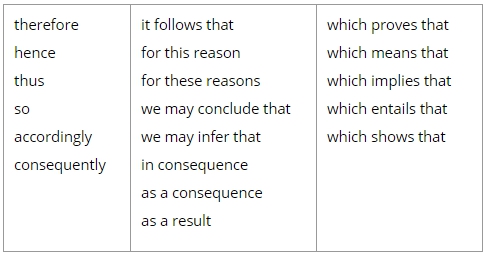Types of Argument Indicators: Conclusion Indicators
Episode #3 of the course Logic basics: Understanding arguments by Gary Curtis
In yesterday’s lesson, you were introduced to argument indicator words and learned how to use them to tell the difference between an argument and a description or other type of passage. In today’s lesson, you will learn how to use a specific type of argument indicator to analyze the structure of an argument.
Analyzing Argument Structure
Once you’ve recognized that a passage contains an argument, the next skill to acquire is the ability to analyze its structure. By “structure,” I mean identifying which of the argument’s statements are premises and which is the conclusion. Assuming that the passage contains a single argument, identifying the conclusion is the easiest way to analyze its structure. If the passage contains more than one argument, then identifying the conclusion will help reveal that fact, since every argument has only one conclusion.
Analyzing the premises-and-conclusion structure of an argument is a vital step in understanding and evaluating it. If one mistakes a premise for the conclusion, any subsequent evaluation of the argument will miss the mark.
Since arguments contain both premises and conclusions, there are two types of argument indicators:
• premise indicators: argument indicators that indicate that a statement is a premise
• conclusion indicators: argument indicators that indicate that a statement is a conclusion
The rest of this lesson will be devoted to conclusion indicators, and tomorrow, we’ll look at premise indicators.
Conclusion Indicators
A conclusion indicator is a word or phrase that indicates that the statement it’s attached to is a conclusion. Typically, conclusion indicators immediately precede the conclusion, but occasionally, they will be found in the middle and sometimes even at the end!
One test of whether a word or phrase is a conclusion indicator is if it’s a synonym of “therefore.” So, if a passage makes sense when you substitute “therefore” for a word or phrase, then that word or phrase is probably a conclusion indicator. Of the indicators we’ve seen so far, “thus,” “so,” and “hence” are also conclusion indicators, as can be verified in any reliable dictionary. The following is a partial list of common conclusion indicators in English:
Warning: This list of indicators is not complete. An exhaustive list of English indicators doesn’t exist because it’s always possible to put together new phrases that serve the purpose.
Examples: Each of the following passages contains an argument. See if you can find a conclusion indicator and determine its conclusion.
• “No man will take counsel, but every man will take money; therefore money is better than counsel.” (Source: Jonathan Swift)
“Therefore” indicates that the conclusion is: Money is better than counsel. Sometimes an entire argument is expressed in a single sentence, as here.
• “Books are not listed in the index, nor are any references to other books or articles that appear in books. Thus, if you write books … you are automatically excluded from the index.” (Source: Martin Anderson, Impostors in the Temple [1992], p.106)
The indicator word is “thus,” and the conclusion is the sentence that it begins.
• “[M]ost species retain sexual reproduction despite its seeming inefficiency, it follows that it must provide advantages great enough to be worth the enormous cost.” (Source: New York Times, 3/25/1986)
“It follows that” is a conclusion indicator. The conclusion is that sexual reproduction provides advantages great enough to be worth its enormous cost.
In tomorrow’s lesson, you’ll learn how to identify premises with the use of premise indicators.
Learn Something New Every Day
Get smarter with 10-day courses delivered in easy-to-digest emails every morning. Join over 400,000 lifelong learners today!
Recommended book
Everything’s an Argument with Readings by Andrea A. Lunsford, John J. Ruszkiewicz, Keith Walters
Share with friends

